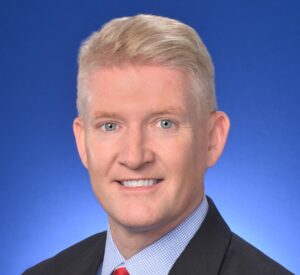The Autism Evolution: The More We Know
The TV series “The Good Doctor” focuses on a young physician with autism. On Netflix, “Atypical” chronicles the life of a teen with autism. With the character Max, “Parenthood” brought the struggle of parenting a child with autism into new light.
With these and other pop-culture references to autism helping to bring the condition to historic levels of awareness and acceptability, I thought it would be an interesting time to talk about the history of autism.
In some ways, the modern concept of autism was launched 75 years ago, in 1943, when an Austrian-born American psychiatrist named Leo Kanner wrote an article in a journal titled Nervous Child. The article, “Autistic Disturbances of Affective Contact,” marked a new use of the word “autism,” disconnecting it from an earlier association with schizophrenia and redefining it as a unique condition.
The word “autism” was not new to the world when Kanner wrote his article. By that time it had been in use for decades, having been coined in 1908 by a Swiss psychiatrist named Eugen Bleuler. But Bleuler used the word “autism” (taken from the Greek word for “self”) to describe schizophrenia patients who were severely withdrawn from the world around them. It was Kanner – and a German psychiatrist with the now-recognizable name Hans Asperger – who popularized use of the word in the 1940s and ’50s to refer to children with specific behaviors.
Of course, those behaviors were not new, either. These obsessive, detached and sensory-sensitive children had been observed before. However, as Kanner and Asperger emerged, the behaviors were becoming more closely examined and assessed … although not necessarily better understood.
To that last point, as the study of autism continued into the mid-20th century, it initially took a very wrong turn. Some psychiatrists and psychologists – including Kanner and Bruno Bettleheim – initially attributed autistic behaviors to bad parenting. One prevailing concept became known as the “Refrigerator Mother” theory, which maintained that “cold” and detached parenting created psychological conditions that sparked autistic behaviors.
Fortunately, psychologist Bernard Rimland, who had a son with autism and who went on to co-found the Autism Society of America, overturned such theories, sparking an understanding in the 1960s that autism was a biological condition, not a product of parenting.
In the 1970s and ’80s, there was a surge in research focused on better understanding autism and trying to determine its cause. Research on twins proved especially helpful in identifying genetics as a factor. To date, no clear genetic markers have been found, but finding them is arguably the primary focus of autism research today.
One product of this shifting understanding of autism has been an ongoing evolution in the way the medical and psychological communities define it. Over the years, The Diagnostic Manual of Mental Disorders (DSM) – the “bible” for mental health – has changed the way it includes autism a number of times. The DSM first fully disconnected autism from schizophrenia in 1980, and it added to its definition and diagnostic criteria repeatedly over the next few decades. In 1994, the DSM added Asperger’s Syndrome as a separate entry. Most recently, in 2013, the DSM narrowed the autism definition, pulling a number of subcategories into the now-familiar “Autism Spectrum Disorder” entry.
Along with this improved understanding of autism has come better approaches for treating children with autism. While institutionalization was for decades the primary option for children with autism, new approaches opened doors to less dramatic treatments that allow children to stay with their families and in their communities. In recent years, Applied Behavior Analysis, an approach with roots in the 1970s, is recognized as the only evidence-based treatment for children on the autism spectrum.
As the incidence of autism continues to increase (from an estimated one in every 5,000 children in the 1970s to one in 41 today), the understanding and treatment of autism is certain to continue to evolve. Our hope is that, soon, the history of this condition will include a discovery of a genetic marker and a means, therefore, to more meaningfully intervene and improve the lives of the people who have autism and the people who love them.
An Autism Timeline
- 1908: Swiss psychiatrist Eugen Bleuler first used the term “autism” to refer to schizophrenia patients who are profoundly withdrawn and self-interested.
- 1943: Dr. Leo Kanner publishes “Autistic Disturbances of Affective Contact” in the journal Nervous Child. A study of 11 children with solitary and obsessive behaviors, the article refers to these children as having “early infantile autism.”
- 1944: German psychologist Hans Asperger describes the “milder” form of autism we known as Asperger’s Syndrome.
- 1950s: The “Refrigerator Mother” theory took root, suggesting that autism resulted from distant – or “cold” parenting.
- 1964: Psychologist Bernard Rimland publishes Infantile Autism: The Syndrome and its Implications for a Neural Theory of Behavior, which refutes the “Refrigerator Mother” theory. The parent of a son with autism, Rimland became a vocal advocate for children and families affected by autism.
- 1970s: Research with twins helps to highlight the role genetics play in autism.
- 1970s: UCLA psychologists Ivar Lovaas and Robert Hoegel develop an autism treatment approach that is the foundation for what is known today as Applied Behavior Analysis.
- 1975: Autism prevalence estimated to be 1 child in every 5,000.
- 1980: “Infantile autism” is included in the Diagnostic and Statistical Manual of Mental Disorders (DSM).
- 1980s: Research further disconnects parenting from autism. Advances in understanding spark new approaches to the treatment of individuals with autism.
- 1985: Autism prevalence estimated to be 1 child in every 2,500.
- 1987: Ivar Lovaas’ publishes “Behavioral Treatment and Normal Educational and Intellectual Functioning in Young Autistic Children,” a study that was instrumental in mainstreaming intensive behavior therapy for children with autism.
- 1991: Autism is named a special education category by the federal government.
- 1995: Autism prevalence estimated to be 1 child in every 500
- 2000: Autism prevalence estimated to be 1 child in every 150
- 2010: Autism prevalence estimated to be 1 child in every 68
- 2013: Autism Spectrum Disorder (ASD) is listed in the DSM, meant to pull the broad definitions of autism under one primary listing.
- 2016: Autism prevalence estimated to be 1 child in every 41.
See a full list of Damar’s autism resources.





